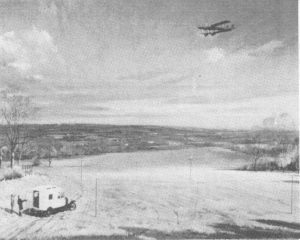- Author
- Luscombe, L.J.
- Subjects
- Naval technology, History - WW2
- Tags
-
- RAN Ships
- None noted.
- Publication
- June 1995 edition of the Naval Historical Review (all rights reserved)
Over the years, on the few occasions that the subject of my prewar (1939-45) involvement with the development of radar has cropped up in conversation, I have invariably been asked “Who invented radar?” Up until now my answer would have been along the lines that I really did not know and that the main reason for my ignorance would have been the secrecy which prevailed at the time. This was also a time when the rapid development of radar was in a variety of directions with contributions being made by many different people, not all of whom made any claim to being an “inventor”. Under these circumstances one could justifiably draw a comparison with Harriet Beecher Stowe’s “Topsy” in Uncle Tom’s Cabin” who in reply to the question “Do you know who made you?” replied “Nobody as I knows I’spect I just grow’d”. Radar in the period commencing 1935 certainly “grow’d”.
My involvement in a minor role with the prewar development of radar (known as RDF at the time) arose when I became a civilian member of the Royal Naval Signal School, later to become titled Admiralty Signals and Radar Establishment (ASRE). This Establishment, prior to the bombing of Portsmouth, was situated in the Royal Naval Barracks. My joining the R.N. SIGNAL SCHOOL was the result of earlier naval experience with the use of Sperry Gyro Compass, Echo Sounding Gear and ASDIC (Anti submarine Detection).
On the question of secrecy, I realise that although I regularly attended Development and Production Meetings at A.C. Cossor’s and other manufacturers engaged in the production of radar equipment, I would have learnt very little about those applications of radar outside my own particular sphere of responsibility, namely Radar Aids designed to improve the effectiveness of naval gunnery.
My search for the written history of radar led me to what appeared to be relevant books. These were,
(1) “The Radar War” by David Pritchard,
(2) “Three Steps To Victory” by Sir Robert Watson-Watt and
(3) “Radar Days” by E.G. Bowen.

Having pursued their combined total of 951 pages and widened my knowledge as to the growth and application of radar, unearthed a number of interesting facts and a few contradictory statements, in the final analysis the most appropriate answer to the question “Who invented radar” would still be that of Topsy…. it “grow’d”.
Radar and its roots certainly did grow, initially slowly over a long period and then at a rapidly increased pace from 1935 onwards. It resulted from the accumulation of major and minor contributions made by many people in various parts of the world and to meet a variety of needs.
Extracts from each of the three books examined have been recorded in order that anyone so interested can draw their own conclusions, or use them as stepping stones to further knowledge.
THE RADAR WAR By David Pritchard
David Pritchard makes the claim that the “invention” of radar is often erroneously credited to the British in the mid-1930s, but the Germans had a rudimentary form of the technique much earlier.
The opening chapter of his book has the heading “Christian Hulsmeyer, the Father of Radar”. He then quotes the definition of radar from the same source as that used by Watson Watt in his autobiography “Three Steps To Victory”, namely “The Principles of Radar” by the Massachusetts Institute of Technology Radar School and reading thus:
“Radar may be defined as the art of detecting by means of radio echoes the presence of objects, determining their direction and range, recognising their character and employing the data thus obtained in the performance of military, naval or other operations“. David Pritchard devoted the next ten pages to justifying the title “The Father of Radar” being applied to Christian Hulsmeyer. He details Hulsmeyer’s endeavours to demonstrate, to the appropriate authorities, his telemobiloscope based an the principle of wireless telegraphy and intended to locate ships and other metallic objects at sea.




